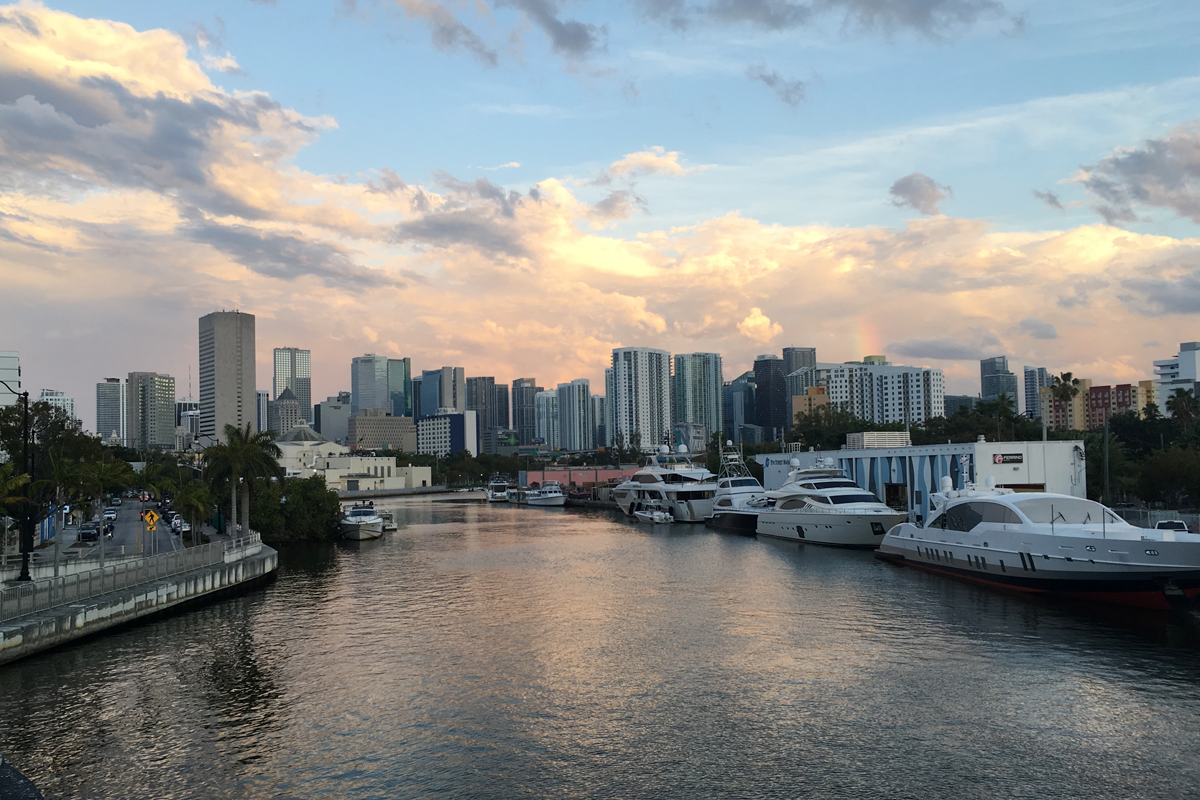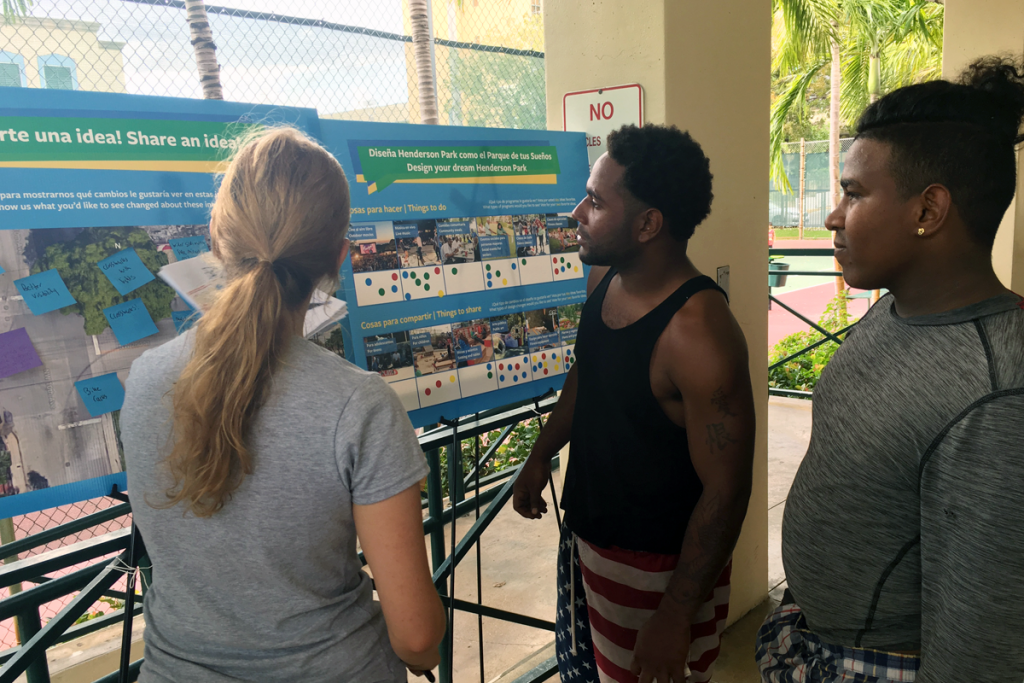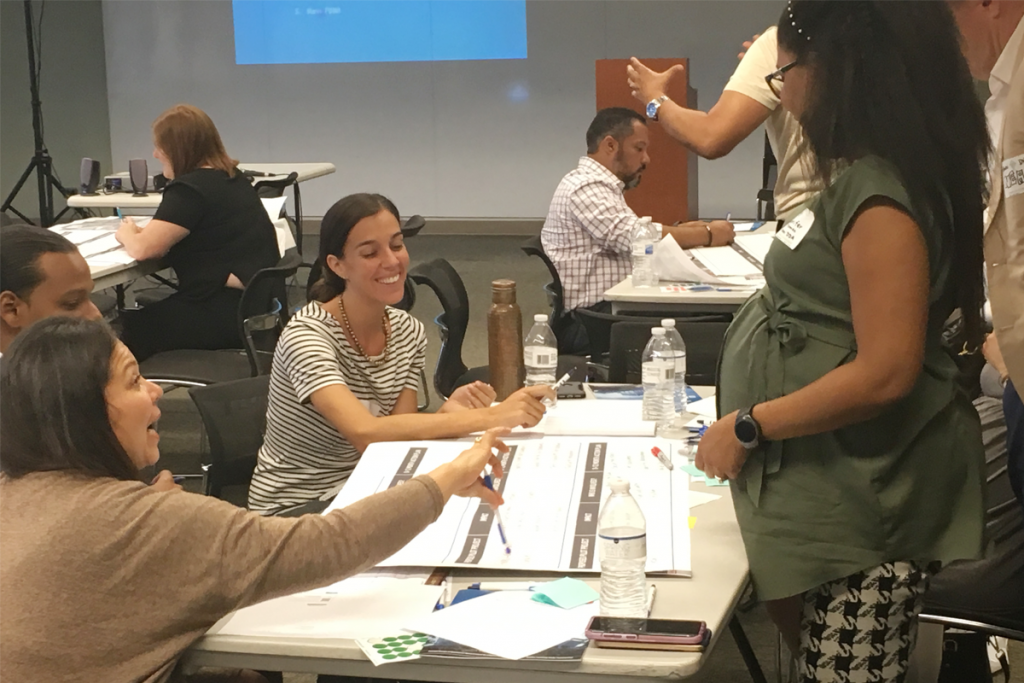
26 Apr Miami Can Be More Linked and Livable Now
An edited version of this op-ed originally appeared in the Miami Herald
By Gil Penalosa and Amanda O’Rourke
Miami is a special place. Natural beauty and year-round sunshine combined with a young, diverse, and dynamic population. Those are assets few cities across the world possess. With so much potential, and with the county set to grow by over 50% over the next twenty years, Miami stands poised at a crossroads. Miami can continue to move forward with a 20th-century approach to city building, an approach that centers the needs of cars over everything else. Or it can learn from past experiences, recognize the failings of that old approach, and adopt a new 21st-century city-building model.
Our organization has worked with and challenged over 300 Cities around the world to use the simple but powerful 8 80 concept when designing their streets and public spaces. To do this we simply ask the question- what if everything we did in our cities was great for an 8 year old and an 80 year old? We believe if it is, it will be great for all!
Over 10 years we’ve seen city after city arrive at this same crossroads. So when our organization, 8 80 Cities, partnered with the Miami Downtown Development Authority for Linked and Livable Miami, a week-long series of 14 events, meetings and presentations centered on building a more connected and vibrant Miami for all, we had a pretty good sense of the concerns we’d be hearing.

Community share their ideas to improve Henderson Park

Workshop with the Miami-Dade TPO
The issues of congestion, sustainable mobility, equity, public health inequalities, and economic competitiveness are ones we’ve encountered again and again. The cities who reach that crossroads and turn the page on 20th-century thinking are the ones making the biggest strides towards reducing congestion, improving access to economic opportunity, increasing equity and improving levels of public health. If Miami wants to be amongst the best, it needs to compare itself with the best and eliminate any complacency. If Miami is going to be a 21st-century city, it needs to focus on four key areas:
Walkability, walkability, walkability
Birds fly, fish swim, people walk. Walking is a fundamental part of being human. Every trip begins and ends with walking. Miami has everything it needs to be a pedestrian paradise. Fantastic weather, a relatively flat topography and booming funky independent businesses. A connected network of wide, comfortable, shaded sidewalks with benches and bus shelters will give local businesses a leg-up by allowing for patios and lounges. Several initiatives are already underway in Miami that if implemented properly, will go a long way in making the pedestrian paradise a reality. The Baywalk should be a national treasure that is completely accessible to all. Completing the Baywalk network is an absolute no-brainer and should be a priority for city and county governments alike.
The Strategic Miami Area Rapid Transit Plan (SMART Plan) is a much-needed investment in public transit. Do not waste this investment by looking at only the transit corridors themselves, but how residents will get to and from transit stops. Walking and cycling connections to transit stops must be part of the SMART Plan planning process to actually shift to more sustainable mobility trips and reduce levels of congestion. The good news is safe and enjoyable walking and cycling infrastructure can be built right now, in advance of SMART plan’s implementation. There’s no need to wait until it’s completion.
Miami-Dade County is one of the five most deadly counties in the country to walk and ride a bike. That’s the bad news. The good news is that the city has everything in its power to change this. A safe pedestrian and cycling environment is about more than mobility, it’s a basic human right. No loss of life on Miami’s streets should be acceptable. Many cities have endorsed Vision Zero, a program with the goal of zero traffic deaths and serious injuries on their streets. This kind of holistic thinking and follow through on action planning is key for Miami to become a truly people-centered city.
Livability is the key to economic vitality
The most talented people in the world can choose to live wherever they want. Whether you’re the best carpenter, the best pizza-maker or the best lawyer, people today choose where to live not where the lowest tax rate is, but where they can find the best quality of life. The cities with the best quality of life are those where people can sleep at home and live outside. High-quality parks and public spaces are the greatest drivers in building a livable city that attracts top talent. That means Miami needs to invest in ensuring every resident has a park within a ten-minute walk of their home, and then ensure that those parks are activated with innovative programming for people of all ages. A city that spends its leisure time outside is one that sees local business and enterprise thrive.
Be guardian angels
Walkability and livability are not just for the wealthy, middle-aged, or able-bodied. The young, the elderly and the economically disadvantaged are the most vulnerable in our society. They tend to be afterthoughts when it comes to public space and infrastructure. Decision makers and civic leaders must become guardian angels of these groups and ensure their needs are reflected in all occasions by Miami’s decision-making process. Creating top-notch parks, sidewalks, bike lanes, plazas, bus stops, bus shelters and clean, safe and reliable public transit is not just about economic opportunity or tourism or even public health. It’s about ensuring the most vulnerable amongst us have access to everything they need to enjoy healthy, happy lives.
It’s urgent!
With the county set to add 1 million new residents over the next twenty years, there is no time to waste. If that is not enough to create a sense of urgency, consider that Florida is the most dangerous state to walk and bike in the country, over 1/3 of adults are obese, and 1/3 of children live in poverty; all worse than the national average. Decision makers need to make investments now to accommodate this growth and address these serious health and inequality issues. That means ensuring new development is environmentally, pedestrian and cycling friendly, and well connected to public transit. Miami has all sorts of public space master plans, active transportation master plans, first and last mile plans, etc. That’s all well and good but plans alone aren’t enough. It’s time to move from planning to doing. Where things are happening, it needs to happen faster and there needs to be more of it. The longer Miami waits to make these necessary investments, the more expensive they will become and the wider the gap between haves and have-nots will become. It’s time to act. Now!



